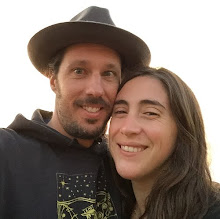Therefore, whenever possible I like to find one of those cheap disposable film cameras in visitor centers and drug stores when I'm on trips and use just one of them to document the trip. The quality may not be great, but there are many other benefits to shooting film that will help to capture any trip with friends and loved ones in a way that will preserve those days for decades. With only around 27 exposures to make, you choose every shot carefully, and you think about the shots you want to capture. Throughout the trip you meditate on the images in your mind; the setting, time of day, and characters in the frame. So that when the opportunity arises for such a shot, you know what you want, and you're ready with that little plastic camera in hand, click. I find that, with some restraint and good decision making, 27 shots can get you through up to 2 weeks. The next bonus, is that you don't have to be stuck to your cameras playback screen half of the trip checking that last shot and showing everybody in the party as they rubberneck to get a view. Even better, you get to relive those moments again days and even weeks later when you finally get the prints back from the lab. And with less and less options to get these film cameras developed, you have to be patient. A few places like CVS will still take your camera, but they don't process it on site anymore. They collect a batch of the cameras (yes, you're not the only one) and then send them off to another lab. This can take up to 2 weeks or more depending on when you drop off. And when you get the images back you automatically get the images digitally transferred onto a CD which is nice, but you don't get the negatives back?
Nonetheless, I now have images I can hold and frame, and best of all, put in some shoebox to be rediscovered years later.











